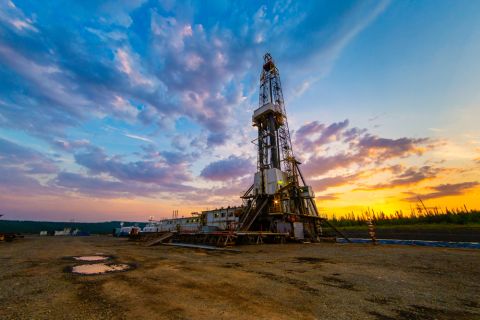U.S. natural gas futures rose to a fresh 31-month high on July 23 on forecasts for hotter weather and higher air conditioning demand over the next two weeks than previously expected with the weather expected to remain hotter than normal through at least mid-August.
That increase came despite forecasts for less demand next week as high gas prices prompt some power generators to burn more coal and less gas to produce electricity for air conditioning. Front-month gas futures rose 8 cents, or 2.0%, to $4.140 per million British thermal units (MMBtu) at 8:08 a.m. EDT (1208 GMT), putting the contract on track for its highest close since December 2018 for a sixth day in a row.
In addition to the front-month gains, the premium of March 2022 futures over April 2022 rose to its highest since October 2010. The market uses the March-April spread to bet on the winter heating season when demand for gas is highest.
The gas industry calls the March-April spread the "widow maker" because rapid price moves resulting from changing weather forecasts have knocked some speculators out of business, including the Amaranth hedge fund, which lost over $6 billion on gas futures in 2006.
Speculators, meanwhile, cut their net long futures and options positions on the New York Mercantile and Intercontinental Exchanges last week for a second week in a row as buyers cashed in some of their gains with the front-month up about 13% so far this month.
Data provider Refinitiv said U.S. output in the Lower 48 states slipped to 91.5 billion cubic feet per day (Bcf/d) so far in July, due mostly to pipeline problems in West Virginia earlier in the month. That compares with an average of 92.2 Bcf/d in June and an all-time high of 95.4 Bcf/d in November 2019.
Refinitiv projected average gas demand, including exports, would rise from 92.5 Bcf/d this week to 95.5 Bcf/d next week and 95.6 Bcf/d in two weeks as the weather turns hotter than normal. Those forecasts were slightly higher than Refinitiv predicted on July 22 on expectations power generators will burn more gas to meet rising air conditioning demand.
The amount of gas flowing to U.S. LNG export plants has averaged 10.8 Bcf/d so far in July, up from 10.1 Bcf/d in June but still below the record 11.5 Bcf/d in April.
With European and Asian gas trading near $12 and $14 per MMBtu, respectively, analysts said buyers around the world would keep purchasing all the LNG the United States can produce.
U.S. pipeline exports to Mexico have averaged 6.5 Bcf/d so far in July, down from a record 6.7 Bcf/d in June.
Recommended Reading
Drilling Tech Rides a Wave
2024-01-30 - Can new designs, automation and aerospace inspiration boost drilling results?
Tech Trends: Autonomous Drone Aims to Disrupt Subsea Inspection
2024-01-30 - The partners in the project are working to usher in a new era of inspection efficiencies.
TGS, SLB to Conduct Engagement Phase 5 in GoM
2024-02-05 - TGS and SLB’s seventh program within the joint venture involves the acquisition of 157 Outer Continental Shelf blocks.
2023-2025 Subsea Tieback Round-Up
2024-02-06 - Here's a look at subsea tieback projects across the globe. The first in a two-part series, this report highlights some of the subsea tiebacks scheduled to be online by 2025.
StimStixx, Hunting Titan Partner on Well Perforation, Acidizing
2024-02-07 - The strategic partnership between StimStixx Technologies and Hunting Titan will increase well treatments and reduce costs, the companies said.





